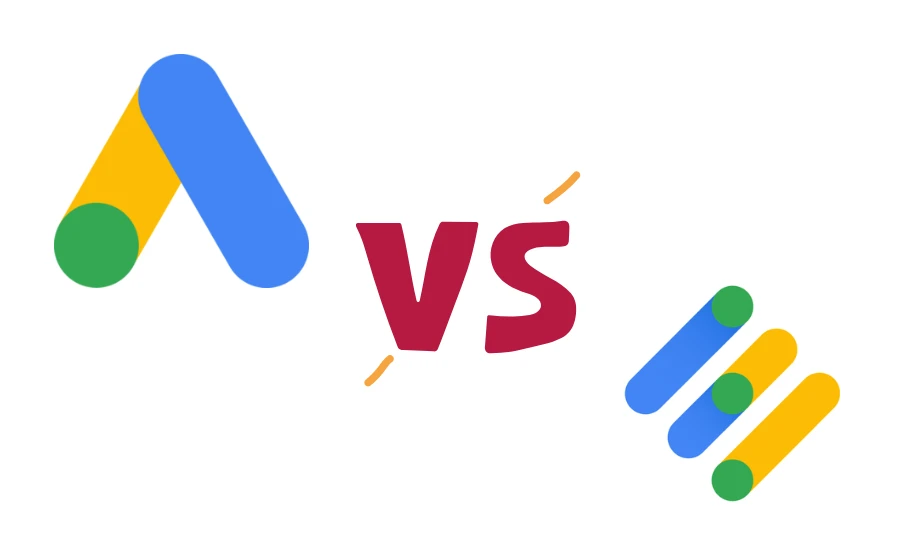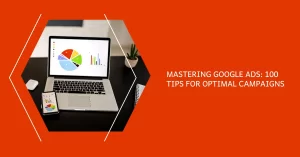Introduction
In the world of digital advertising, Google has established itself as a dominant player with its suite of advertising solutions. Two widely used platforms offered by Google are Google Ads Manager and Google Ads. While they may sound similar, these platforms serve distinct purposes for advertisers and publishers. In this blog post, we will explore the differences between Google Ads Manager and Google Ads, their functionalities, and how they contribute to the success of online advertising campaigns.

Google Ad Manager
Google Ad Manager, formerly known as DoubleClick for Publishers (DFP), is an ad management and serving platform primarily designed for publishers and media companies. Its main focus is on managing and delivering advertising across websites, mobile apps, and other digital platforms. Here are key points about Google Ads Manager:
Ad Management:
Google Ads Manager enables publishers to efficiently manage their ad inventory. It provides tools for ad trafficking, ad placement optimization, ad inventory forecasting, and reporting. Publishers can track ad performance, view revenue data, and make informed decisions about their ad placements.
Direct-Sold Ads:
With Google Ads Manager, publishers can sell ad space directly to advertisers. It supports direct-sold ad campaigns, where publishers negotiate and establish direct relationships with advertisers for specific ad placements. This gives publishers more control over pricing and ad placements.
Programmatic Advertising:
Google Ads Manager also facilitates programmatic advertising, which involves using automated systems to buy and sell ad impressions in real-time. Publishers can tap into programmatic demand sources, including Google Ad Exchange, to maximize their ad revenue.
Yield Optimization:
Google Ads Manager offers features to optimize ad yield, such as dynamic allocation and ad targeting options. These features help publishers maximize fill rates and generate higher revenues by prioritizing and delivering the most valuable ads to their audience.
Google Ads
Google Ads, previously known as Google AdWords, is an advertising platform designed for businesses and advertisers. It allows advertisers to create and manage online advertising campaigns across various Google properties, including search results, websites, mobile apps, and video content. Here are key points about Google Ads:
Ad Campaign Creation:
Google Ads provides a user-friendly interface for advertisers to create and launch online ad campaigns. Advertisers can define campaign objectives, set budgets, select targeting options, and create compelling ad creatives. Google Ads supports various ad formats, including search ads, display ads, video ads, shopping ads, and more.
Keyword Targeting:
One of the core features of Google Ads is keyword targeting. Advertisers can bid on specific keywords related to their products or services. When users search for those keywords, relevant ads are displayed, increasing the chances of reaching potential customers who are actively searching for related information.
Audience Targeting:
Google Ads allows advertisers to target specific audiences based on demographics, interests, and behaviors. Advertisers can reach users who fit their target customer profiles, increasing the precision and relevance of their ad campaigns.
Performance Tracking:
Google Ads provides robust tracking and reporting capabilities. Advertisers can monitor campaign performance, measure key metrics like impressions, clicks, conversions, and view detailed reports. This data helps advertisers optimize their campaigns, make data-driven decisions, and improve return on investment (ROI).
Different Perspectives, Common Goals:
While Google Ads Manager and Google Ads have different focuses, it’s important to note that they are not mutually exclusive. Advertisers and publishers often use both platforms in conjunction to achieve their advertising goals. Here are some common goals they share:
Revenue Generation:
Both platforms aim to help businesses generate revenue. Advertisers use Google Ads to promote their products or services, attract customers, and drive sales. Publishers utilize Google Ads Manager to optimize their ad placements, increase fill rates, and maximize ad revenue.
Audience Reach:
Both platforms offer extensive reach and access to Google’s vast network of users. Advertisers can leverage Google Ads to reach a wide audience across various channels, including search, display, and video. Publishers using Google Ads Manager can tap into programmatic demand sources, connecting their inventory with advertisers looking to reach specific audiences.
Data-Driven Decisions:
Both platforms provide robust analytics and reporting tools. Advertisers and publishers can leverage the data collected through these platforms to gain insights, measure performance, and make informed decisions. By analyzing data, they can optimize their advertising strategies, refine targeting, and enhance campaign effectiveness.
Conclusion
In summary, Google Ads Manager and Google Ads are distinct platforms with separate roles in the digital advertising ecosystem. Google Ads Manager caters to publishers, empowering them to manage and monetize their ad inventory effectively. On the other hand, Google Ads serves advertisers, enabling them to create and manage online advertising campaigns across various Google properties. While their functionalities differ, both platforms contribute to revenue generation, audience reach, and data-driven decision-making. By leveraging the strengths of Google Ads Manager and Google Ads, businesses can create comprehensive and successful online advertising campaigns that engage the right audience, maximize revenue, and drive business growth.








